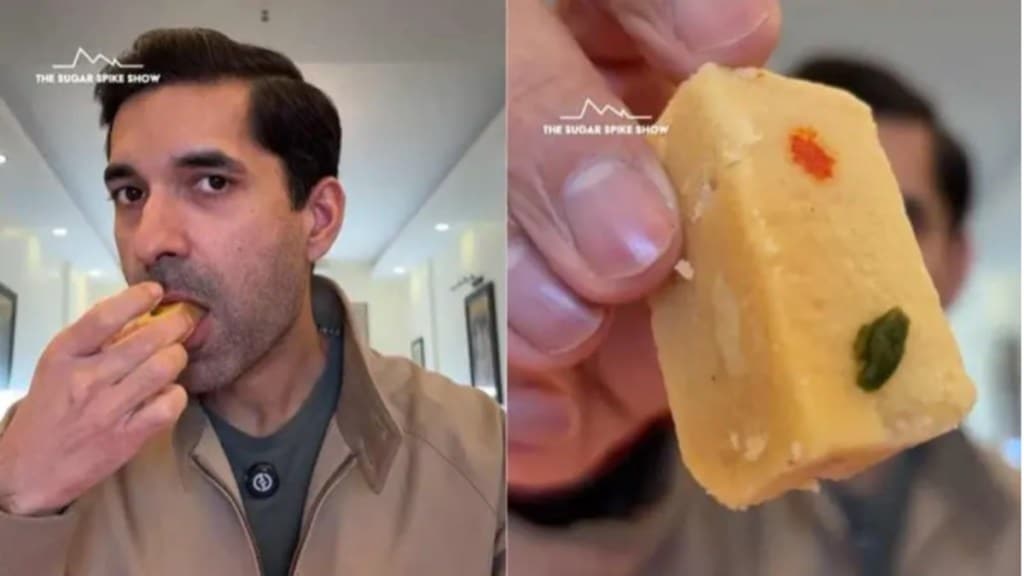Mysore Pak is an extremely simple yet highly popular dish of Mysore, the City of Palaces. Made up of just three key ingredients — ghee, gram flour and sugar, Mysore Pak is extremely delicious.
For health-conscious consumers, desserts can often feel daunting, leading many to hesitate before indulging. But what is the impact of Mysore Pak on your blood sugar levels?
Rohan Sehgal, a digital content creator known for his ‘The Sugar Spike Show’ on Instagram posted that impact of Mysore Pak on his blood sugar levels. While he isn’t a doctor or a medical practitioner, he uses his continuous glucose monitor readings (CGM) for his research.
Sehgal started a ‘Winter Desserts Series (Indian) where he tests popular mithai prepared during winter for their impact on his blood sugar levels. The content creator consumed 100g of Mysore Pak containing about 500 calories.
A few hours later, he checked the readings of his glucose monitor which showed only an 11 mg increase in blood sugar level. Pleasantly surprised, Rohan Sehgal declared that Mysore Pak had the lowest blood sugar increase amongst all the other winter desserts he tried so far. But his video comes with a disclaimer. He states that his reading could differ from others.
The content creator found that when he had Gajar Ka Halwa, Moong Dal Halwa Chikki and Gajak, his blood sugar levels had increased by about 30 mg. However, when he ate Mysore Pak it increased by only 1/3rd of what he had seen up till now. He also said that maida-based desserts like Gulab Jamun spiked his blood sugar levels by 46 mg.
According to Sehgal, the reason for this is that Mysore Pak contains besan, which has a low glycemic index because it’s rich in protein and fibre. Ghee, twice the amount of besan, is added to prepare the sweet. Since it’s a fat, ghee contains zero glycemic index, he said. He claimed thaat food prepared with besan leads to a lower spike in blood sugar levels. However, it is important to highlight that moderation is important when it comes to sweet dishes like desserts.

